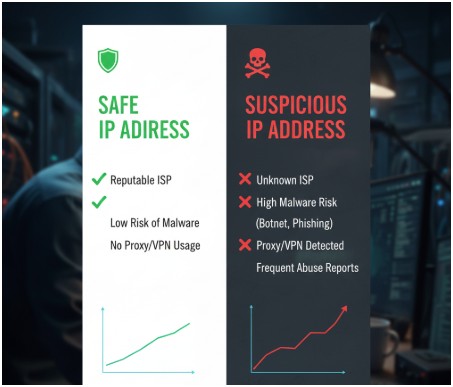I’ll be honest — the first time I saw the IP 111.90.150.2o4, I thought it was just another random string of numbers. But then I noticed the typo. That little “o” wasn’t supposed to be there. The real IP is 111.90.150.204, and once I dug deeper, what I found was concerning.
This address has been connected to malicious content, proxy usage, and possible fraudulent activity. If you’ve ever interacted with a site tied to this IP, you might want to pay close attention.
What Is 111.90.150.204 and Who Owns It?

Let’s start with the basics. The IP 111.90.150.204 is owned by Shinjiru Technology Sdn Bhd, a web hosting and internet service provider based in Kuala Lumpur, Malaysia. Shinjiru has been around for years, and like many hosting providers, its servers host thousands of websites.
But not all those websites are harmless. Some have been flagged for suspicious behavior, which is why 111.90.150.204 is on the radar of cybersecurity analysts. It’s not on every blacklist, but its reputation score suggests caution.
Why Is 111.90.150.204 Considered Risky?

Here’s where things get serious. Multiple security reports in September 2025 linked this IP to malicious URLs. Clicking on them could trigger malware downloads or expose your personal data. I’ve seen firsthand how quickly a single click can lead to browser hijacking, phishing attempts, or worse — stolen credentials.
Another red flag is that 111.90.150.204 may operate through a proxy server. Proxies are not always bad — they can help with privacy — but they’re also tools attackers use to mask their true location. That makes it harder to trace malicious activity and easier for scams to slip under the radar.
The IP also carries a high fraud risk score. That score isn’t just random — it’s calculated based on traffic behavior, server activity, and reported incidents. Even though only one formal abuse report was filed in January 2025, the potential for misuse remains high.
How to Recognize a Suspicious IP Like 111.90.150.204
If you’re unsure whether an IP is safe or shady, a quick comparison can help. I use this table as a quick reference whenever I investigate unknown IPs:
| Feature | Safe IP Address | Suspicious IP Address (e.g., 111.90.150.204) |
| Reputation | Clean history, no abuse reports | Linked to malicious URLs and proxy use |
| Fraud Risk | Low | High |
| Blacklist Status | Not listed | May appear on security watchlists |
| Hosting Behavior | Legitimate sites only | Hosts suspicious or malicious sites |
| Abuse Reports | Rare or none | Filed abuse reports (Jan 2025) |
What Should You Do If You Interacted With 111.90.150.204?
If you clicked a suspicious link or visited a site linked to 111.90.150.204, don’t panic — but act fast. I always follow these three steps whenever I think I’ve interacted with something risky:
- Run a Full Security Scan: Use trusted antivirus and anti-malware software to scan your device immediately. This catches hidden malware before it causes damage.
- Change Your Passwords: Update login credentials, especially for email, banking, and social media. Even if nothing seems wrong, it’s better to be safe.
- Watch for Unusual Activity: Keep an eye on account logins, transactions, and system performance. Suspicious changes could mean your data has been compromised.
These steps have saved me more than once. They might feel basic, but they’re your best defense against escalating damage.
How Can You Stay Safe From Suspicious IPs in the Future?
After dealing with IPs like 111.90.150.204, I’ve learned that prevention is always easier than cleanup. Here’s how I keep myself safe:
- Verify links before clicking: Hover over links to see where they lead. If they redirect to unknown IPs, avoid them.
- Use a VPN: It hides your IP address and encrypts your connection, making it harder for malicious sites to target you.
- Enable two-factor authentication: Even if your password leaks, this extra step can block attackers from accessing your accounts.
- Check IP reputation tools: Sites like AbuseIPDB or VirusTotal can quickly tell you if an IP is flagged.
Staying alert doesn’t mean living in fear. It just means being one step ahead — and in cybersecurity, that’s everything.
FAQs About 111.90.150.204
What is 111.90.150.204 used for?
It’s an IP address owned by Shinjiru Technology Sdn Bhd in Malaysia. While some legitimate websites may use it, others linked to this IP have been associated with malware, suspicious URLs, and proxy usage.
Is 111.90.150.204 dangerous?
Not always, but it carries a high fraud risk score and has appeared in security reports tied to malicious activity. Treat it as potentially risky and take precautions if you’ve interacted with it.
How do I check if my device was affected?
Run a comprehensive scan using reputable antivirus or anti-malware software. Look for unusual activity, slow performance, or unexpected pop-ups — these are signs your system may be compromised.
Can I block 111.90.150.204?
Yes. Most firewalls and security software allow you to block specific IPs. If you want to be extra cautious, blocking this IP can help reduce exposure to potential threats.
Final Thought: Don’t Underestimate a Simple IP
I used to ignore IP addresses like 111.90.150.204, assuming they were just background noise on the internet. But after seeing how easily a single malicious link can spiral into stolen data or drained accounts, I pay close attention now.
The internet’s strength is also its weakness — anyone can host anything. That’s why staying informed and proactive is your best defense. The next time you see an unfamiliar IP pop up in your logs or browser, don’t shrug it off. A few seconds of caution could save you from a world of trouble.

